A 1920s Hotel Lobby Hidden In An Upper West Side Apartment Building
Some time ago, I was scouting Upper West Side lobbies when I came to the apartment building at 253 W 73rd Street.
Tucked away behind the palatial Ansonia, I’d honestly never noticed it before, and decided to take a peek inside.
At first, the entrance seemed like your typical building lobby – a desk to one side, an alcove with mailboxes beyond. Then I went a little further in…
…and wow:
Seriously – how beautiful is this?
But what exactly had I stumbled on? Had the property always been an apartment building, or was there more to the story?
As it turns out, the property was originally built by a group of Freemasons in 1927 known as the Levelers. The first Masonic clubhouse/hotel of its kind in the United States, the Level Club offered its members 225 bedrooms and such state-of-the-art amenities as a fully equipped gym, handball courts, “azure” swimming pool, Turkish baths, a solarium, bowling alleys, a grill, a barber shop, a manicurist, a lounge, dining rooms, a ballroom, an auditorium, a banquet hall, and a roof garden.
Its origins with the Freemasons explain the building’s facade, which, on closer inspection, is absolutely dripping in Masonic symbols and imagery. Look just above the door…
…and you’ll find the all-seeing eye…
The square and compasses…
…an hourglass…
…and an emblem with LC for the Levelers Club:
Further up, numerous hexagrams dot the facade:
It gets even crazier. According to author Bruno Bertuccioli, who spent years writing a comprehensive history of the building (which you can purchase here), the Level Club was designed as a “true-to-size rendering of King Solomon’s Temple,” the only one of its kind in the entire world (in case you’re wondering, Ivo Shandor was not the architect).
In the center, you’ll find a pair of pillars representing the entrance to King Solomon’s Temple…
…held up by sculptures of Hiram Abiff and Solomon himself:
The ornate lobby has been beautifully preserved and is much the same as it was originally built, although now with a lighter paint job. Originally, there would have also been a cigar department, theater tickets booth, barber shop, check room, shoe polishing service, and phone booths.
The lobby is centered on an imperial staircase, which leads down from a wrap-around mezzanine balcony level:
These mirrored doors once led into the Palm Room, a meeting room decorated with live plants, and the dining rooms.
On the far wall, a set of elevators. Note the whimsical designs along the top, and the interesting array of geometric patterns:
A chandelier hangs from the inlaid ceiling:
Among the many additional public spaces were the auditorium, seen below in 1927…
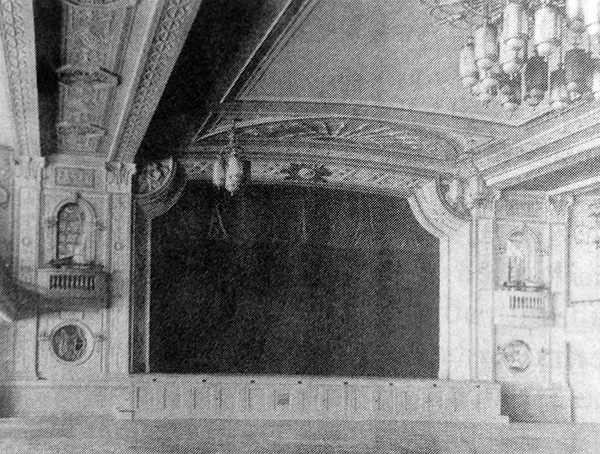
…and billiard room:

Sadly, the Level Club closed a mere two years after it opened due to the Great Depression. It later re-opened in the mid-1930s as the Riverside Plaza Hotel, a weekly hotel for men. The below postcard advertises most of the same amenities originally available to Level Club members: “400 Rooms, modernly equipped, all with Bath, Radio; Gymnasium, Swimming Pool, Handball Courts, Bowling. New York’s Finest Banquet Facilities.”
The hotel’s bowling alleys, pictured below in 1927, had one particularly famous patron…

…Babe Ruth, who lived nearby and frequented the lanes as often as five days a week (his average was 177). Below, Ruth personally sets up pins in 1942, as the War had caused a pinboy shortage:

A Riverside Plaza hotel card signed by Ruth was recently sold at auction:
A matchbook from the Riverside Plaza:
Finally, one of those strange 1950s postcards that lops out all the surrounding buildings:
The hotel struggled through the 1960s (it was then a kosher hotel), and by the 1970s, had become a drug and alcohol rehabilitation center operated by Phoenix House. Phoenix House sold it in the mid-80s, and it was turned into an upscale condominium. The lobby was fully restored, and the Level Club name returned to the property.
Tragically, none of the club’s original function/recreation rooms survive. The auditorium in particular was in a state of total disrepair, with much of its ornamentation destroyed or stolen. These spaces were converted into additional apartments, resulting in a building filled with quirkily-shaped living spaces – varying ceiling heights, different style hallways, and the occasional detailing left over from a past iteration of a room. Below, the (oddly-painted) penthouse apartment as pictured in the NY Times shows the mishmash of spaces:
From Masonic private club to men’s hotel to drug rehab center to upscale condo, it’s incredible that the building has survived to this day in such great shape. Let’s hope it stays that way as the cycle inevitably turns in a new direction.
For a comprehensive look at the building’s history, be sure to check out The Level Club by Bruno Bertuccioli (unfortunately, out of print).
-SCOUT
PS – Unfortunately, the lobby is for residents only, and not open to the public.

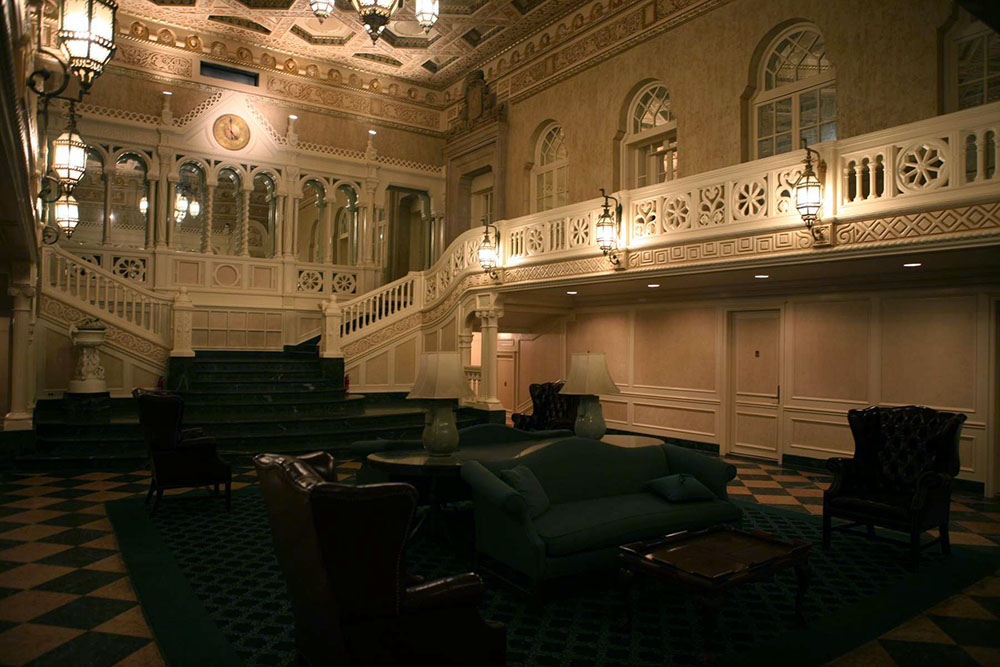

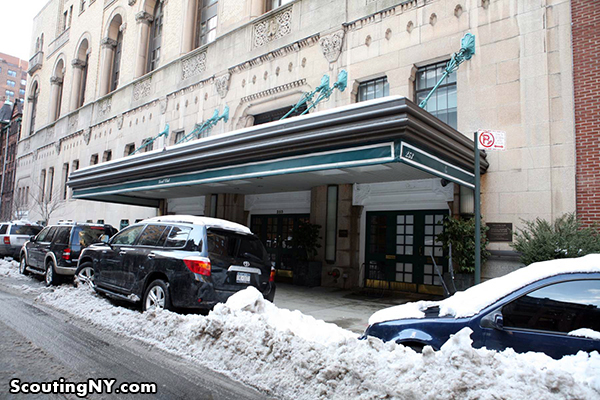
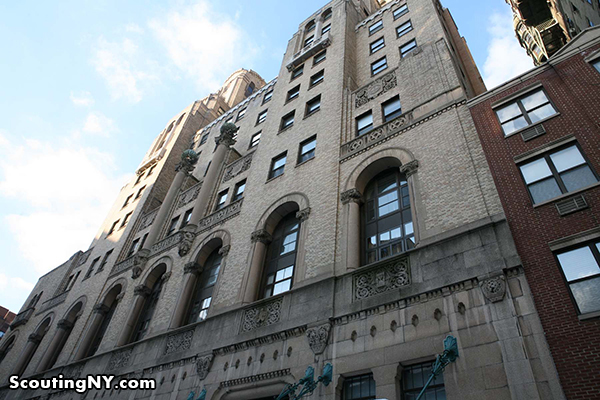
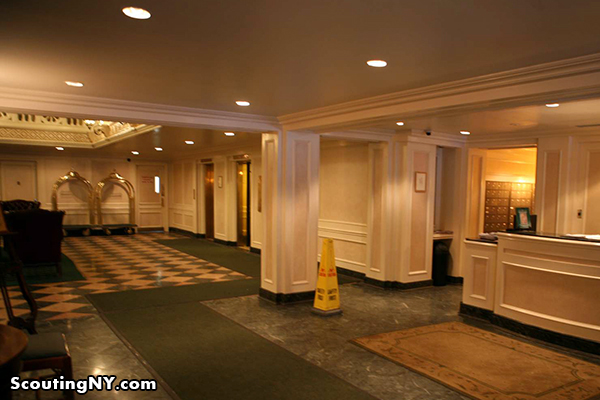


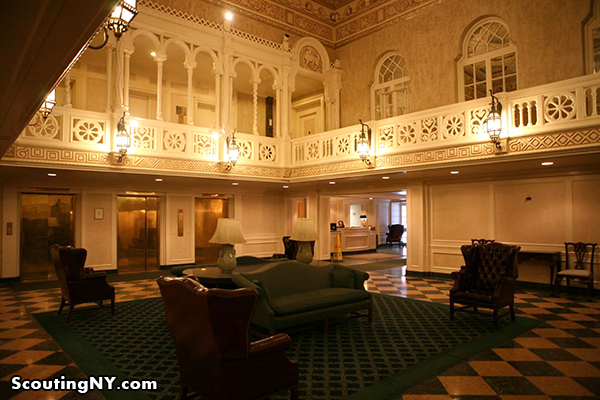
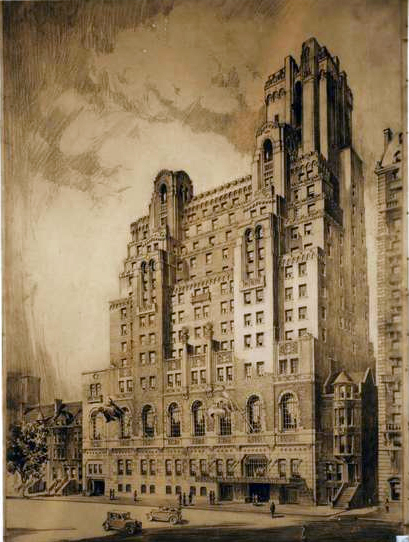


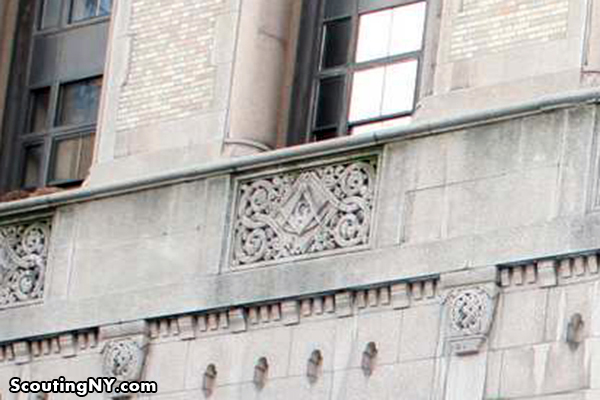
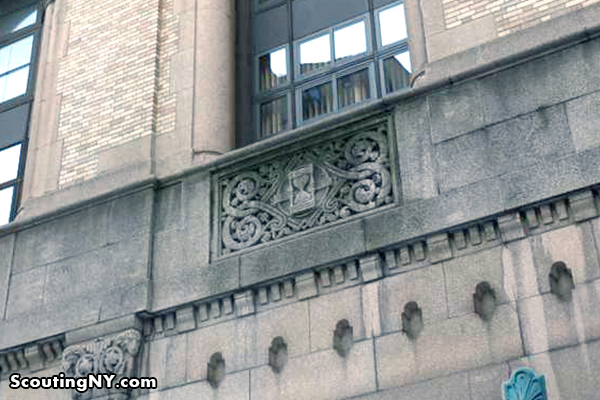

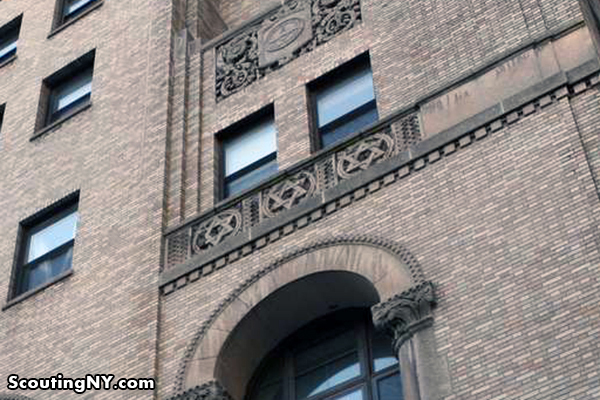

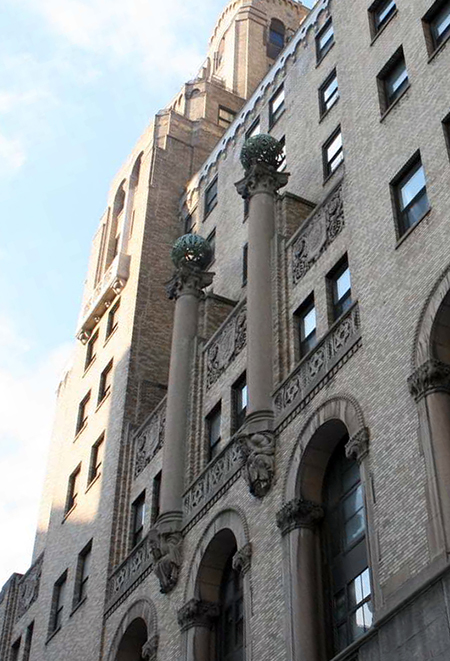

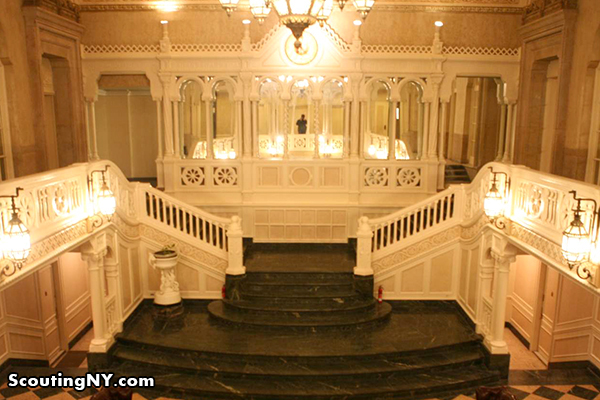
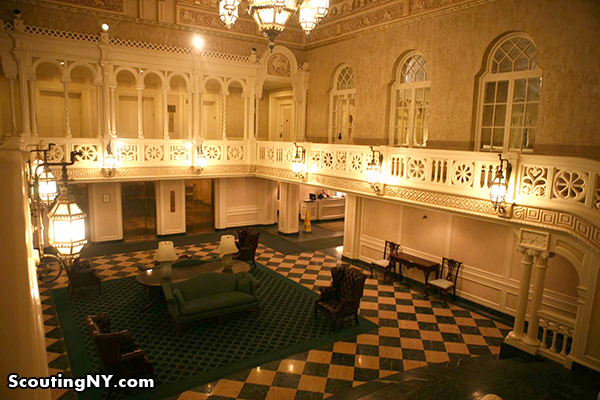
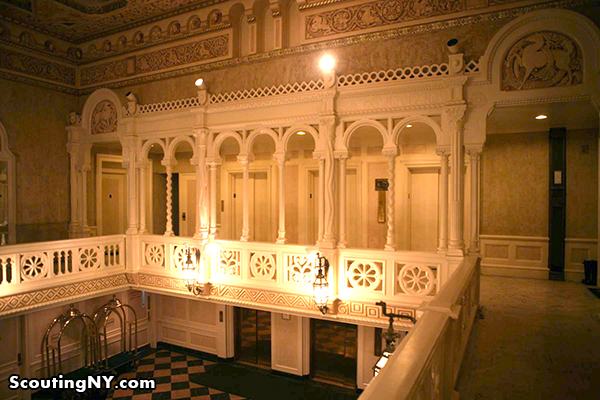
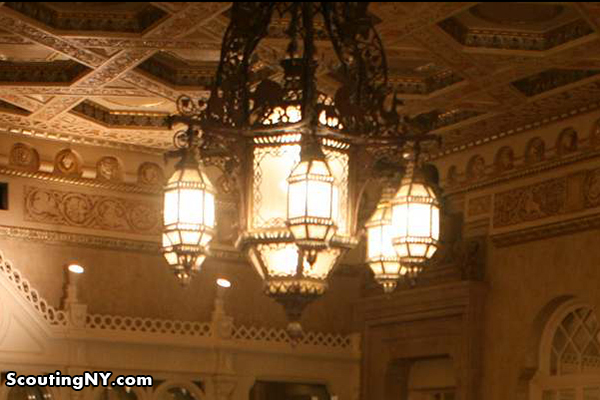


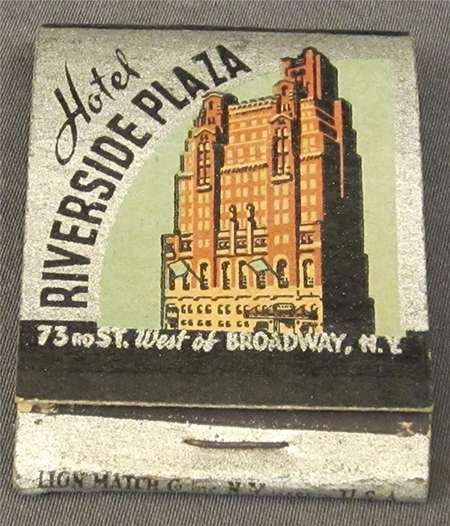
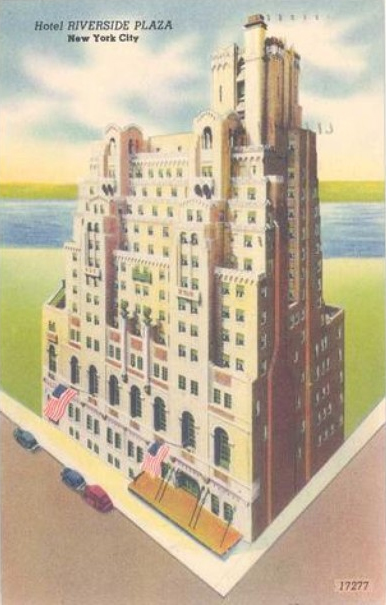





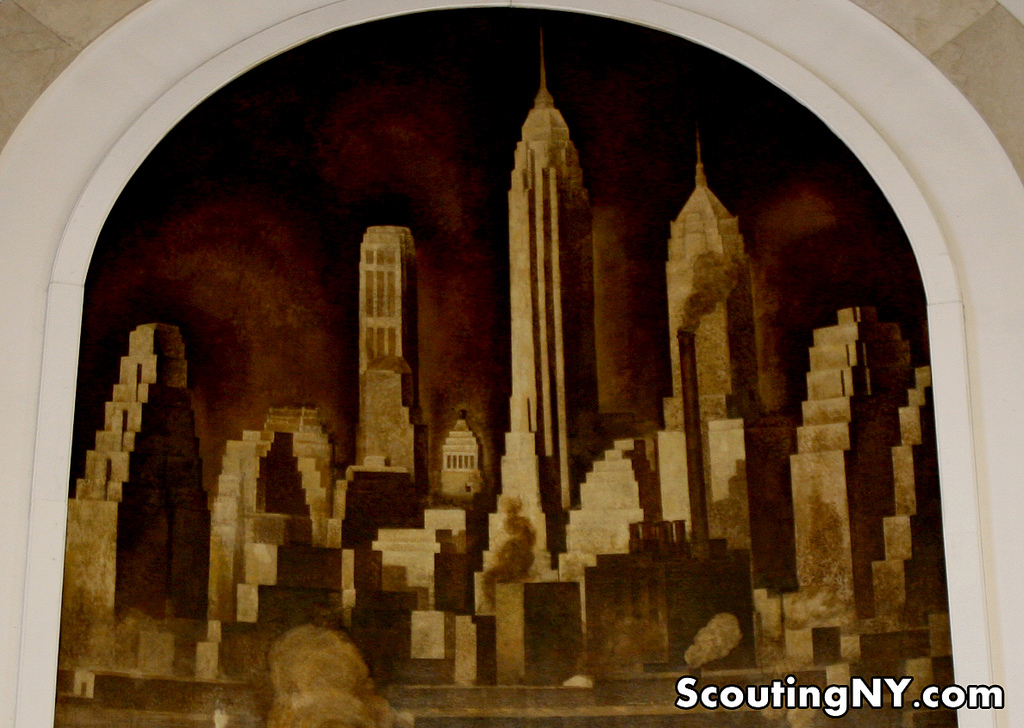
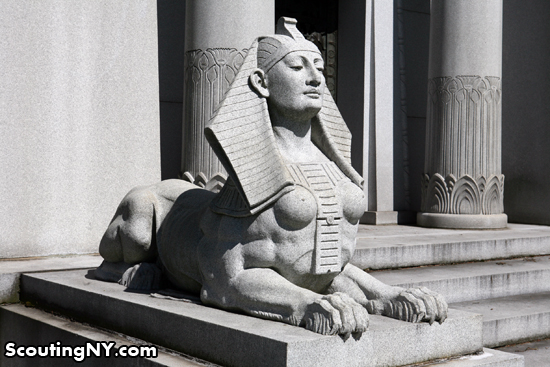
Thanks for the lovely pictures. The Ansonia Hotel is far from unknown. Who did you talk to there? Nobel Prize winner Saul Bellow set one of his most famous novels there. The NY Times writes, “Mr. Bellow was the poet of a single building, the Ansonia Hotel on Broadway and 73rd Street, the setting for a large portion of his 1956 novella “Seize the Day.” He described it as a Baroque palace, “with towers, domes, huge swells and bubbles of metal gone green from exposure, iron fretwork and festoons.”
“Under the changes of weather it may look like marble or like sea water, black as slate in the fog, white as tufa in sunlight,” he wrote. “This morning it looked like the image of itself reflected in deep water, white and cumulous above, with cavernous distortions underneath.”http://www.nytimes.com/2005/04/07/books/saul-bellow-a-writer-captivated-by-the-chaos-of-new-york.html
In the post-Stonewall Gay renaissance of the Seventies the Ansonia housed the gigantic, nationally-famous Continental Baths, which included a nightclub where Bette Midler and a host of other stars performed, like Andy Kaufman, Barry Manilow. There’s a movie about it. https://en.wikipedia.org/wiki/Continental_Baths Then it became the much-discussed hetero swinger’s club, Plato’s Retreat, a symbol of pre-AIDS sexual experiment. Thanks for the beautiful pictures.
I think you misunderstood the post. Nick did not say the Ansonia Hotel is unknown, nor is the page about the Ansonia Hotel. He said “Tucked away behind the palatial Ansonia, I’d honestly never noticed it before” and is talking about 253 W 73rd, NOT the Ansonia.
I did misunderstand. I read Nick’s post to mean that the two buildings were intimately connected, though re-reading it now, I can’t find a sentence to that effect. My error. I suspect that the abundance of riches confused me. New York civilization in its Golden Age was capable of creating the Ansonia and right next to it, this too? It’s almost too much.
After his divorce my dad lived there in the mid 1960s. He said that the actor Jules Munchin also was a tenant in the hotel.
Under Delancey Street is 107-year-old abandoned station that has been untouched since the late 1940s
These two fellows want to turn it into an underground park.
http://www.wired.com/2015/06/want-build-underground-park-youll-need-lab-first/
Hi Scout, Do you have any information on the structure on the roof of the building? It seems too big just to house elevator machinery.
It’s obviously a huge antenna for pulling in and concentrating psychokinetic energy.
Yeah… we’re gonna have to cross the streams.
There is no Dana only Zhull!
That would require an obelisk. Sadly I don’t see one. 🙁
My cousin’s (previously my Aunt’s) apartment (on 74th st.) backs onto that building. I remember when it changed over from Phoenix house to condo’s. They cleaned the exterior (which made it much nicer to see out the living room window). I never went round to 73rd to check out the front, though! Thanks for the post.
The book “The Level Club” is available to read, from the The Chancellor Robert R Livingston Masonic Library of the Grand Lodge of New York. Members of New York Lodges can have it sent to them. Others may be able to review the book at the Library, Contact the library via: http://www.nymasoniclibrary.org/
Points for the Shandor reference. 😉
That’s incredible. I’m amazed such things have survived the years still.
My friend used to live there in the late 1980’s. Nothing in her apt to recall the glorious past but the lobby and exterior were amazing!
I saw the star of david symbols and was curious but then you spoke of king of solomon temple etc.
So is/was there a connection between Freemasons and Judaism??
Because the star of David was never originally a Jewish symbol. It’s a hexagram. Research hexagram symbology and usage in ancient cultures.
The legendary history of Freemasonry is based around the design and construction of Solomon’s Temple at Jerusalem, as described in both Kings I and Chronicles I.
Freemasonry is a thinly veiled offshoot of Kabbalah.
The hexagons (or Star of David as some see it) is the emblem of “Eastern Star”, an offshoot of Freemasonry where men and women are members. The men must be Master Masons and the women must be related to a mason.
Eastern Star uses a five pointed star.
Star of David is an old symbol. Freemasonry has King Solomon in the lessons. Before Christ, we were Jew or believed in nothing or many ‘gods’. Masonry believes in the supreme being and therefore has members of religions world wide. The lodge in this town has Hindu, several Arab sects, Jewish, and many christian religions.
And I’m with Greenberg on the Eastern Star – 5 pointed.
No such thing as the ‘star of David’. David has absolutely nothing to do with this symbol, it is an always has been occult in origin. It was used by his son Solomon in the conjuring of spirits. It was/is also used by the Rothschild family to conduct business (rothschild = red shield). After the Rothschild family established the state of Israel they adopted this occult symbol for their flag. It has nothing to do with Christianity or Jews, it is used in Kabbalah which is the religion of the Khazars, the people who call themselves Jews today but have not a drop of Jewish blood running through their veins. The Palestinians actually have more Jewish blood than these mongrels whom Jesus referred to as the ‘synagogue of Satan’.
What a wonderful article. Just loved it. Thanks you so much for all your hard work & sharing it. Fantastic.
Thank you for the marvelous photo essay and surprising history. In 1974, when I was an NYU student, I worked as a lifeguard and swimming instructor at the men’s health club in the basement, when it was the Hotel Riverside Plaza. The lobby looked much the same, except, as you say, it now has a lighter paint job. At that time it was a gloomy “welfare hotel” – the atmosphere was dingy and a little scary. Coincidentally, I also worked there in 1978 when it was Phoenix House. We rented the ballroom to use as a rehearsal space for a feature film. Unfortunately, I never saw the auditorium, so thanks for the nice photo of it as well as the others.
Fascinating anecdote. Listen, if Nick has any ambitions of writing for the New Yorker or the New York Sunday Times Magazine, the Ansonia is the article to begin with. Writing a history of a culture, one searches for one test case, a knot where many strands unite. Has any other building been so accurate a reflection of New York City cultural history and its changes, era by era? From the Twenties boom to the current boom 90 years later, all documented, though ungathered. (I doubt the self published memoir makes the grade, but it will help.) Eyewitnesses still alive. It’s just down the street from Columbia University, so Columbia would feel a mandate. Nick could look at the Columbia catalog, call up whatever professors are mavens for New York architectural history, political history, Saul Bellow and Jewish NYC history, gay history. Say one of your grad students could get a publication credit for helping bring depth to a chapter of this article. There’s a fine book in the Ansonia. Good luck.
GREAT scouting report. I posted it on several Freemason groups for their perusal and we all are in awe. Very nice!!
2B1 ASK1 http://nymasons.org/
–Rick
Cool articles – I’ll have to check this out next time we’re in the city, but I have to correct you on one point. This is not the only known true to scale/size replica of Solomans Temple. See the link below:
http://www.conspiracyarchive.com/Commentary/Masonic_Parlante.htm#mp_62
The Manitoba legislative building g in Winnipeg Manitoba was built by Freemasons and is built to the biblical specs of Solomans Temple – right down to the ‘Holy of Holies’ room complete with the ‘arc of the covenant’ on the roof above. If you’re interested in Templar lore and Freemanson architecture check this out. Thanks.
Curious about the auditorium- did they split it into 2 floors? Or are they are apts. with ceilings that high?
I used to live in that neighborhood. The green balls on top oF the two columns are lit up at night! Very pretty.
The 2 pillars with the green lights were stationed at the opening of King Salomon’s Temple. They also have names too, Jachin and Boaz. The two balls on top represent Earth and Universe.
Excellent article with super research… The post card, the Babe Ruth, the match book really make it. Where did you get that stuff? Pretty, pretty good!
Excellent article! I moved to NYC in 1973 to be Al Pacino’s assistant. Rehearsals — read-throughs — for Serpico were in the ballroom at the Riverside Plaza Hotel. I just remember cavernous, dingy, scary space. The whole west side was in disrepair. I love how the city keeps bringing masterpieces back from the brink. I just wrote the entry on the Oyster Bar at GCT for a book called Savoring Gotham. Tile! Thank you, Nick!
i agree with SF Professor…there is a fine book in here, and a feature article. Great that they allowed these photos! You should check out Stewart Brand’s excellent book “Buildings that Learn” for ideas. It is along these same lines, documenting the new lives of old buildings. Great work, I enjoyed this so much!
I lived in the Ansonia for 5 years in the early ’70’s. I believe that I went into that lobby for rehearsals with the Haydn and Handel Society for a concert verrsion of Samson with Richard Tucker in his sunset years. I remember thinking how ornate, hidden away and beautiful it was. Thanks for this interesting piece.
One of the most interesting things, in my opinion, is that the balls at the top of the pillars light up. I took a picture of it last night. http://i.imgur.com/umwyh6R.jpg
Great photo! I lived in the neighborhood for 29 years and forgot about those spectacular pillars. Thanks. (And, of course, thanks, Scout, for the wonderful posting!)
+1,000,000 for the Shandor joke. My friends used to live here. I’ll never forget the first time I walked into the lobby. It was like stepping back in time.
Thank you so very much for doing this. Marvelous collection. The picture of billiard tables stopped me: a
s an old three-cushion player, I was delighted to see that one of the billiard tables had no pockets.
GREAT scouting report. I posted it on several Freemason groups for their perusal and we all are in awe. Very nice!!
2B1 ASK1
-Rick
Another example of a building the Fraternity has lost over the years. Should have become GL of NY HQ, or other Masonic function.
This is a great location find. You always find cool spots and thanks for sharing.
“In the center, you’ll find a pair of pillars representing the entrance to King Solomon’s Temple…”
The pillars have names: “Boaz” is on the left and “Jachin” is on the right.
Cool article. 10 years ago I lived a couple doors down from the Level Club. I always enjoyed looking up as I passed by, enjoying the building’s mysterious symbols and sculptures.
I am quite lucky to live in The Level Club. Your lobby pics are few years old and need updating; as almost a year was spent bringing the ceiling, sculptures and fixtures back to it’s early multi-hued glory. It’s truly astonishing now, come back!
I bet those bowling lanes are hiding somewhere in there still…. I’m not a bowler but something about old hidden lanes is stirring.
Given the entirely pervasive theme in Freemasonry of building, measuring, and the like, the name “Level Club” almost certainly refers to the levels that surveyors use – or, if not, to a carpenter’s spirit level, used to test and ensure plumb and square construction. There’s probably no special link to that other definition of “leveling” to mean tamping down or erasing differences, often to a fault. A wonderful find – perhaps a bit outshone by the older, exuberant Ansonia next door?
I have a walking cane, made with Masonic doorknob which I determined came from that building. It is a Brass Doorknob with a raised Square and Compass and raised brass ban across the center that says “Level Club” , I Found it at an antique store in Camp Verde AZ.
I wandered into that building when it was being rehabed in the 1980s.
My cousin’s (previously my Aunt’s) apartment (on 74th st.) backs onto that building. I remember when it changed over from Phoenix house to condo’s.
We lived in the Riverside Plaza as children in the 60’s. We played in the lobby and snuck into the ballroom and handball court. We watched weddings and other celebrations in the ballroom. The movie, Love With The Proper Stranger with Natalie Wood and Steve McQueen was filmed in the hotel lobby. We shook hands outside of the hotel with Robert Kennedy when he was campaigning. I met my husband of 46 years in the Al Roon ping pong hall that was in the basement of the hotel.
No, it was not exactly like Eloise in the Plaza but there are many fine memories.